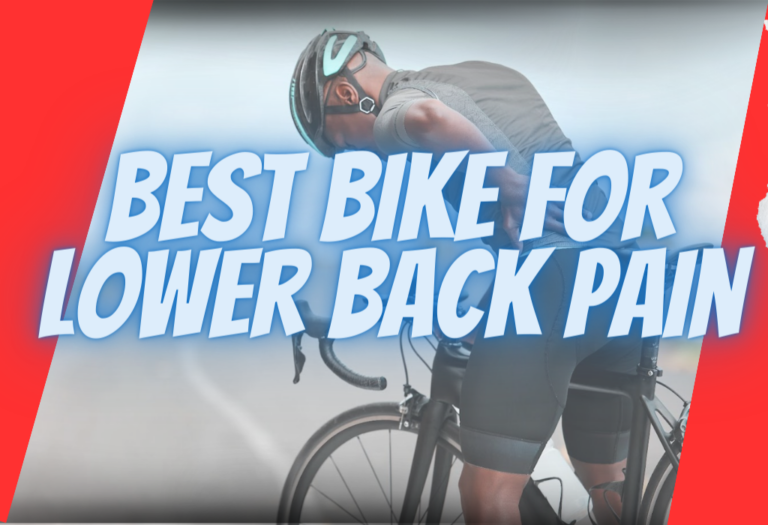Back in my mid-20s, I first felt the sting of back stiffness. I shrugged it off then, but as the years rolled by, I realized the importance of a healthy back. That’s when I discovered cycling, a surprisingly effective way to ease back pain.
Cyclists, like us, often grapple with lower back discomfort. It can be a real pain, literally, but don’t worry, there are plenty of solutions. From fixed-gear to hybrid bikes, there’s a whole world of options that can make your ride smoother and less painful.
Here’s the thing, there’s no universal answer to which bike is best for everyone. Different bikes have different benefits, especially when it comes to chronic pain. So, let’s dive in and explore the best bikes for lower back pain and how they can help you pedal away the discomfort.
What Kind of Bike Is Best
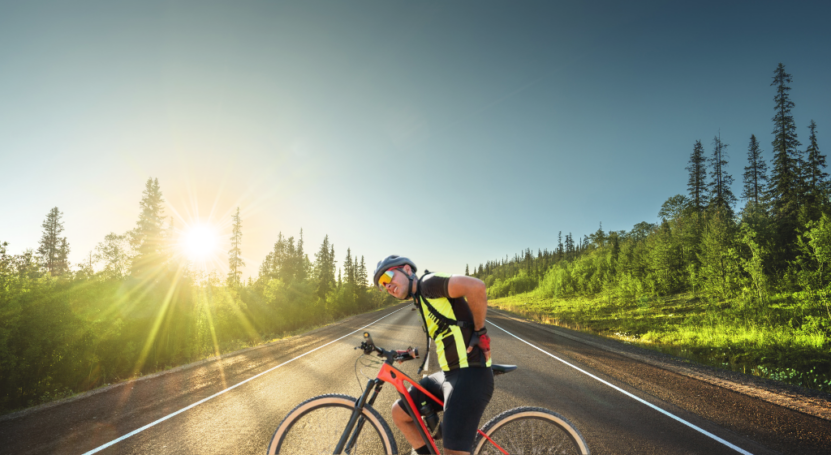
Cycling is a great exercise for people with lower back pain, but not all bikes are created equal. There are three types of bikes that are best for people with lower back pain:
Recumbent
First up, we have the Recumbent Bikes. Picture yourself lounging back in a comfy chair, but instead of kicking your feet up, you’re pedaling away. That’s a recumbent bike for you.
The reclined position and the back-supporting seat make it a low-impact workout, perfect for easing lower back pain. Plus, it’s a great way to get your heart pumping and strengthen those muscles, all while being gentle on your joints.
If you’re thinking about giving a recumbent bike a spin, remember to start slow and gradually up the ante.
Upright
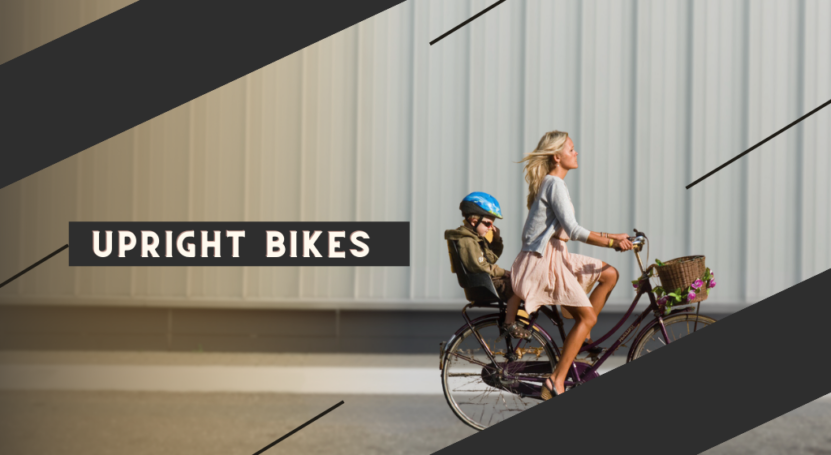
Next in line are the upright bikes. Now, these might not be as cushy as the recumbent bikes, but they can still be a good ally against back pain.
The key here is to get the adjustments right. The seat height, position, handlebar height, and angle, all need to be tailored to your body to avoid any extra strain on your back.
So, don’t be shy to tinker around until you find the sweet spot.
Hybrid
Last but not least, let’s talk about hybrid bikes. Imagine if a road bike and a mountain bike had a baby, that’s a hybrid bike. They offer a more upright riding position, which can be a relief for your back.
Plus, their wider tires and suspension make for a smoother ride, which is a blessing if you’re sensitive to bumps. And just like the other two, a hybrid bike is a great way to boost your fitness level and keep future back pain at bay.
What Are the Causes of Lower Back Pain?
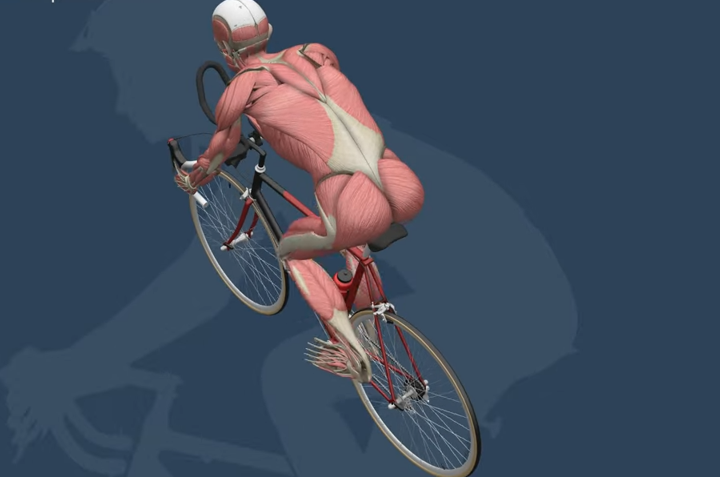
It’s important to remember that everyone’s experience with back pain is unique, but these are some of the usual suspects:
- Bad Posture; Picture this: you’re slumped over your desk, hunched in front of your computer for hours on end. Sound familiar? Well, this kind of slouching can really take a toll on your lower back muscles, causing them to strain and tire out. This can lead to localized pain and irritation. So, remember to sit up straight and give your back the support it needs.
- Lack of Exercise; Now, I know we’ve all been guilty of this at some point. Maybe it’s the comfort of the couch or the latest binge-worthy show that’s keeping you inactive. But here’s the thing: a sedentary lifestyle can be a real pain in the back. Literally. When your core muscles are weak and stiff from underuse, they can struggle to perform even the simplest tasks, causing pain and discomfort. So, it’s time to dust off those running shoes and get moving. Your back will thank you.
- Obesity; Carrying extra weight is like carrying a heavy backpack all the time. It puts a lot of strain on your lower back muscles, leading to inflammation and pain. But here’s the good news: this isn’t a life sentence. With a commitment to healthy eating and regular exercise, you can lose the weight and ease the pain. Remember, the journey to a healthier you starts with a single step.
Can a Bike Get You Relieved from Lower Back Pain?
You know, there’s a lot of chatter out there about biking being a great way to relieve lower back pain. And it’s not just talk. Some studies, like one from the University of Utah, found that folks with chronic lower back pain who took up regular biking reported less pain and improved function compared to those who didn’t.
So, why does biking get such high praise? Well, there are a few reasons:
- First, biking is a low-impact exercise, which means it puts less stress on your joints than other forms of exercise.
- Second, biking engages your core muscles, which can help support your lower back.
- And finally, biking gets you moving and increases blood flow, which may help reduce inflammation in the lower back. If you’re experiencing lower back pain, consider giving biking a try – you may be surprised at how much it helps!
How Should You Ride to Avoid Back Pain?

There are many things to keep in mind when riding a bike to avoid back pain. First and foremost, make sure that the bike is adjusted to fit you properly. This means that the seat should be at the right height so that your leg is fully extended when you pedal. The handlebars should also be set so that your arms are slightly bent when you reach them.
When you’re riding, keep your back straight and avoid leaning too far forward or backward. Imagine there’s a string pulling you up from the top of your head, keeping your spine nice and aligned. And try to resist the urge to bounce up and down on the seat.
That can be a real strain on your back. Instead, aim for a steady, smooth pedaling rhythm. If you need to stop quickly, lift yourself up a bit instead of slamming on the brakes.
And here’s a pro tip: if you’re going for a long ride, make sure to take frequent breaks to stretch your back and other muscles. It’s like giving your body a mini vacation. This can help delay fatigue and pain, making your ride more enjoyable.
How Do You Strengthen Your Lower Back?
Your lower back can be strengthened in a variety of ways. The main method is to exercise. There are many different forms of exercise that can help you reduce lower back discomfort. You can do 3 following exercises:
- First off, let’s talk about exercises that target your lower back directly. Deadlifts, Jefferson curls, and toe touches are your go-to moves here. These exercises are like a love letter to your lower back muscles, helping to build strength and resilience.
- Next up, don’t forget about your core. Your abs and lower back are like two peas in a pod, working together to support your body. So, let’s show them some love with exercises like sit-ups and crunches. Trust me, you’ll feel the burn, but your back will thank you.
- Lastly, let’s talk balance and stability. This is where yoga shines. The poses and stretches can help improve your balance, stability, and flexibility, all of which are great for your back. Plus, it’s a great way to relax and unwind. Who said strengthening your back couldn’t be zen?
How to Avoid Back Pain While Riding?
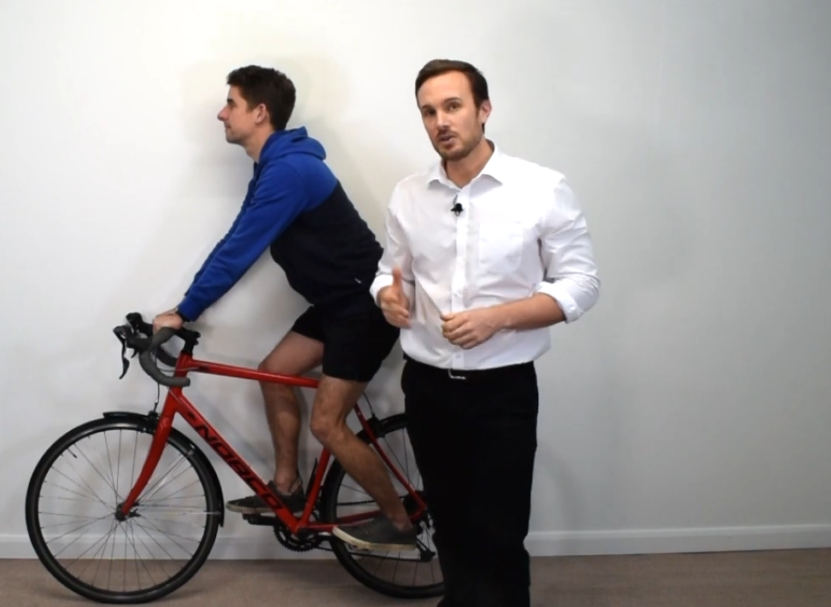
Here are some suggestions for preventing back pain while biking:
- A suitable fit for your bike is important. That means adjusting the seat so your leg is fully extended when you pedal. The handlebars should be at the same height or slightly higher than your seat. It’s all about creating a comfortable, natural position for your body.
- Use a padded seat cushion to reduce pressure on your back. It’s like a comfy pillow for your backside, reducing pressure on your back and making your ride smoother.
- When you’re in the saddle, keep your back straight and avoid leaning too far forward or backward. Imagine you’re a puppet with a string pulling you up from the top of your head, keeping your spine nice and aligned.
- Don’t forget to take breaks and stretch your back and muscles throughout your ride. Think of it as a mini spa session for your body. It’s a great way to keep fatigue and stiffness at bay.
- And last but not least, stay hydrated. Drink plenty of water to avoid dehydration, which can lead to muscle cramps. It’s like oiling the gears of your body, keeping everything running smoothly.
FAQ
Why Does My Low Back Hurt After Biking?
Low back pain after biking can be caused by a number of factors, such as poor bike fit, incorrect saddle height, uneven saddle, knee less than 25% bend at the end of the stroke, excessive reach, the horizontal distance between the saddle and bars, bad posture on and off the bike, and muscle strain.
It is important to make sure your bike is properly fitted to your body, and to take care of your body off the bike to avoid injury.
Are Hybrid Bikes Better for Your Back?
Yes, hybrid bikes can be better for your back. They are designed with an upright riding position, which helps to reduce strain on your back, wrists, and neck, compared to the more aggressive riding position of a road bike.
What Type of Bike Is Most Comfortable?
Recumbent Bicycles have a long, low design and a full-size seat with a backrest. Recumbents are available in two-wheel and three-wheel designs. Many recumbent riders feel that they are the most comfortable option available for bicycling.
What Is the Easiest Bike to Ride?
The easiest bike to ride is typically a cruiser or a hybrid bike. Cruiser bikes are designed for leisurely rides and come with an upright riding position, wide handlebars, and a comfortable saddle. Hybrid bikes are a combination of a road bike and a mountain bike, and also offer an upright riding position for maximum comfort.
How Long Should I Bike Everyday?
Generally, adults should aim to bike for at least 30 minutes a day. However, if you are training for a race, a professional cyclist may aim to bike for up to five hours a day.
When it comes to children, they should aim for at least 60 minutes of physical activity a day, with some of that time spent on a bike. This is where Choosing kids’ bicycles becomes crucial. It is important to note that your biking time can be broken up into multiple sessions. For example, you can bike for 15 minutes in the morning and another 15 minutes in the afternoon.
Conclusion
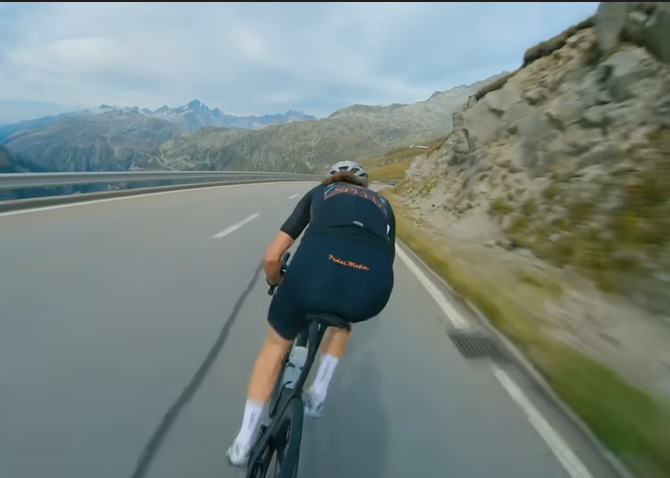
Cycling emerges as a potent tool in the arsenal against lower back pain, offering a low-impact, core-engaging exercise that can be tailored to individual comfort levels with the choice of recumbent, upright, or hybrid bikes.
However, the benefits of cycling extend beyond the choice of bike, requiring attention to correct posture, bike adjustments, and a steady, smooth pedaling rhythm. Regular breaks for stretching and hydration further enhance the experience and benefits. Complementing cycling with targeted exercises to strengthen the lower back and core muscles can contribute to alleviating back pain.
It’s essential to remember that each person’s experience with back pain is unique, often influenced by factors like posture, exercise habits, and body weight. Therefore, a holistic approach addressing these factors, coupled with professional medical advice, can pave the way for a healthier back and a pain-free life..

